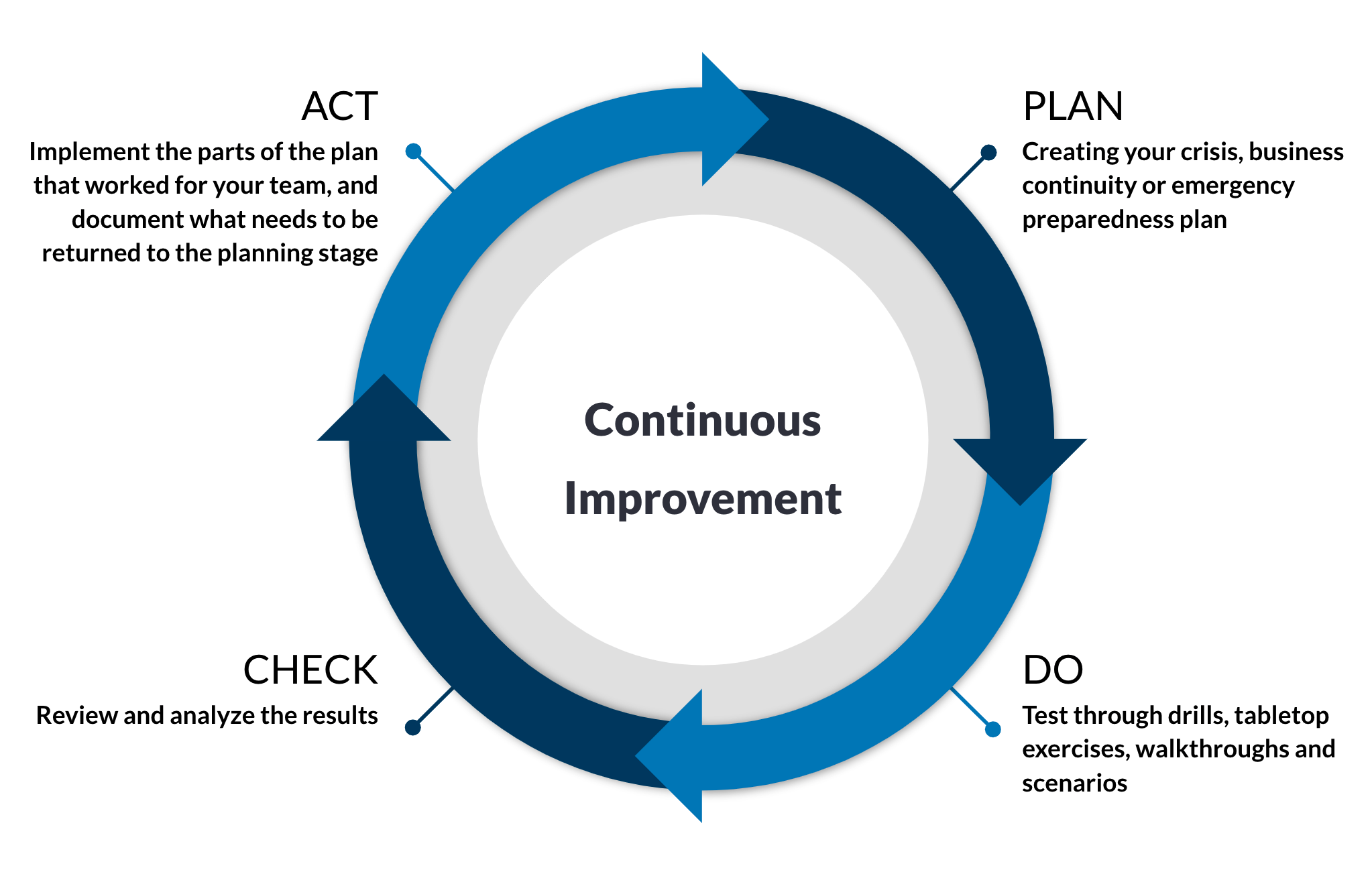You Don’t Need Just a Plan

If you’ve spent any time on our blog in the past few years, you know we’re big on plans, crisis plans, business continuity plans, emergency preparedness plans and crisis communication plans. We believe they are a critical piece for any organization’s success and longevity.
And yet we also know, plans are not enough.
The job of a plan is not to eliminate the risks your organization faces. Their job is to outline the information, protocols and resources needed to improve your response and feel safer. Plans are based on theory, they are policies and procedures that outline the “what-if” scenarios. They are usually dormant and sit on a shelf, in a shared drive, or on a device and not thought of until a moment of panic.
And that is the problem, plans that are created and then “sit on a shelf”.
To be truly resilient, organizations need to learn from exercises, emerging threats, and even full-blown crises, and revise and refine the plans created as part of a continuous improvement process that then takes plans, and makes them actionable programs.
Programs are based on results with an action-focus towards a specified end.
Programs are active, they are revisited, revised, practiced and tested regularly, a process that can follow the “Plan, Do, Check, Act” methodology that many organizations are already familiar with.
For those who are not familiar, or who want a refresher, “Plan, Do, Check, Act” is a scientific method of problem-solving used for decades, also known as the PDCA cycle, Shewhart cycle, or the Deming cycle. As these names suggest, the PDCA cycle is a loop rather than an end-to-end process. The goal is to improve on each improvement in an ongoing process of learning and growth. Some changes are incremental, others are full scale breakthroughs.

As illustrated above, once a crisis plan has been developed in the “Plan” phase, it moves into the “Do” phase of the cycle, where your team takes part in drills, tabletop exercises, walkthroughs or other scenario-based activities to gain experience with the plan. This process will reveal gaps not only in the plan, but in the roles and responsibilities of those involved, without having a “trial by fire,” in a live crisis scenario. (We have a case study available on how one of our clients, the Farm Credit Council, conducted a full-day crisis response exercise with the plan they created, and then deployed on our platform, In Case of Crisis.)
Once your team has completed the “Do” phase, it is time to review and analyze the results as part of the “Check” process. Here you can document the response times, look at after-action reports, and debrief the team as to how they felt it all functioned.
Finally, armed with your results, you can “Act,” solidify what worked and what parts of the plan need to return to the “Plan” stage again for improvements and revisions.
The benefits of continuous improvement are simple, they let you constantly improve your practices to make your team and organization more efficient, accurate and effective in both incremental and breakthrough ways. And by operationalizing your plan before an actual crisis, you move from “just having a plan,” to having “an actionable program.”
Learn how hundreds of organizations large and small are using our award-winning issue and crisis management platform, In Case of Crisis, to better prepare for and respond faster to emerging threats.









